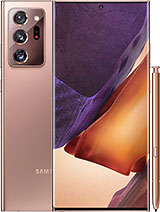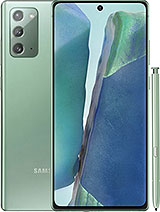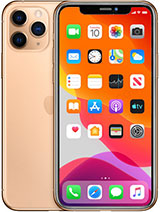iPhone 11 Pro Max vs. Galaxy Note 20 Ultra camera comparison By CNET
The Galaxy Note, 20, ultra and iPhone 11 Pro are both fantastic phones now, it's time to see which camera is best we're going to be comparing photos from both of these phones across a range of categories, from landscapes to portraits night mode to selfies and, of course, testing out video quality, as with all of these photo comparisons, it does come down to personal preference and the screen you're viewing on does make a difference and just to note, I've left pretty much everything on default settings in the stock camera app, so scene, optimizer on the Galaxy Note, 20 ultra and smart HDR turned on the iPhone 11 Pro max. So let's look at some photos, whether it's San Francisco's, notorious fog or on a bright sunny day, landscapes, look great on these phones with each phone doing a perfect job with color detail and dynamic range like the s20 ultra. The note also has a 108 megapixel option, which is great if you want extra latitude to crop or to get more of a shallow depth of field thanks to that large sensor. Sometimes it's so shallow. You have to take a step back and use the telephoto camera to get more depth of field with pixel binning, the regular 12 megapixel shots. From the note look great, the iPhone's 12 megapixel sensor uses another computational photography method called deep fusion to bring out more detail in some outdoor shots.
The note photos are sharper and more detailed when you look at full magnification, but in others it's the iPhone, which is also generally sharper in medium to dim light. I love the perspective from the ultra-wide on both phones. The iPhone can be a bit more dramatic with its colors and overall I prefer the HDR effect from the note, as it controls the shadow and highlight detail a bit better to test out the 50x zoom. On the note 20 ultra, I set both phones on a tripod and zoomed in to the palace of fine arts. Here's what the image looks like from the note at one time on the main rear camera, then at 5 times optical zoom.
The camera then shifts to a hybrid digital zoom at 10 times 20 times and finally 50 times the 5 times. Zoom is superb as long as you have enough light and the sweet spot is the ten times zoom. If you want the best compromise between getting closer to your subject and digital zoom, the iPhone has a two times telephoto lens, and then it goes out to a maximum of ten times. Digital zoom. Here's a side by side to show you what two times looks like from each phone, then five times digital on the iPhone and five times optical.
On the note and finally, ten times on both it's pretty clear, which one produces the better shot using zoom live focus on the note and portrait mode on the iPhone blur the background behind your subject. Edge detection is good on both this one was a pretty easy separation, but the white balance is super different with the iPhone quite warm and the note more cool. With a more tricky background. The note is a little more precise with fine details like hair, but with this outdoor light, I look a little too pink on the note, and I'm quite soft compared to the shot on the iPhone. The note does slightly better, with edge detection for non-human subjects like flowers, as you can see here, the iPhone does blur out some branches on the left-hand side, but the areas that it does get right are sharper for selfies.
My skin tone is more accurate on the iPhone. The note 20 ultra does do better for dynamic range, though especially so, detail doesn't blow out as much, and it's most obvious when filming video on the front-facing camera just like in this clip for low-light photos, the phones are close when using night mode. Overall, the note brightens the scene a little more than the iPhone does and produces photos with inky blue skies, which I love, but in others the iPhone's warmer white balance was a little more accurate to the scene, and it really does depend on the photo as to which one looks better. In some shots, it's the iPhone and in others the note 20 ultra. You can also use the notes ultra-wide and telephoto cameras in night mode, whereas the iPhone doesn't have night mode on the ultra-wide and one more general photo tip.
The note can shoot in raw and gives you exposure controls in pro mode. You can do this on the iPhone, although you do need a third-party app now for video, and these phones produce perfect results. As you can see, I reviewed these clips on a 4k screen, and they look fantastic. The iPhone's picture profile does look a little more saturated and punchy than that. From the note, both capture detail well, but in bright outdoor light, the iPhone does look to do a little better job of capturing detail like the trees.
Let's talk, autofocus, so the note 20 ultra has laser autofocus, which is much faster and more accurate than the face detection system used on the s20 ultra, which often had to hunt for focus. It is improved, but it's still quite obvious when the camera changes focus when you're filming as it snaps pretty quickly, especially when something enters the frame. The iPhone is smoother with its exposure and focus transitions. On the note, you get the option to use the five times optical zoom, when you're filming at 4k, 30 and below the iPhone gives you the option to use the two times: telephoto camera at 4k, 60 and below. I had no complaints about stabilization on either when I was shooting at 4k, though the note does have a super steady mode at 1080p, it is shot on the ultra-wide camera and cropped in, so the quality is not as good as from the main camera.
I also took some 4k video in low light and neither are particularly great. The iPhone is a touch sharper overall and has less noise, but yeah, you probably don't want to be shooting too much low light. Video on these phones, but the note 20 ultra clearly offers much more in its stock camera app for video there's a live focus, video mode where you can blur the background behind your subject, there's also a pro video mode on the rear camera that gives you lots of extra control over your video recording. I'm actually shooting this right now.4K 30 frames a second using pro video mode. You get full exposure, control, there's also a live, histogram and live level monitoring.
You also can change the direction of where the audio is coming from the built-in microphone. So it's either omnidirectional coming from the front or the rear of the camera. I have it set to coming from the rear camera. So take a listen and see what it sounds like there's also a 120 frames per second setting at 1080p. So when you play it back on the note's 120 hertz screen, it looks buttery, smooth and 8k.
Video on the note is actually super usable. This clip is obviously downscale, so you can watch it in 4k, but we'll be putting up some 8k raw samples on YouTube and a deeper dive into pro video mode, for you too so stay tuned, as is the case every year. These phones really do have strengths in different areas. But for me overall, it's pretty clear that the Galaxy Note 20 ultra offers the most for photographers everything from five times optical zoom, which can go out to 10 times. It still looks perfect, that's incredibly valuable.
It's got also the manual exposure controls in both photos and now video, which does give it a leg up over the iPhone, but the iPhone did put up a good fight, considering it is last year's model. So I'm really looking forward to testing out the brand new iPhone 12 when it's released sometime soon, thanks for watching the comparison, as always, let me know which phone you think won down in the comments, and let me know if there's a phone, you want me to compare against the Galaxy Note.20 ultra.
Source : CNET



























